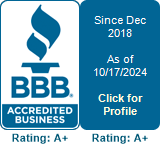Medicare is a federal health insurance program that pays for a variety of health care expenses. It’s administered by the Centers for Medicare & Medicaid Services (CMS), a division of the U.S. Department of Health & Human Services (HHS). Medicare beneficiaries are typically senior citizens aged 65 and older. Adults with certain approved medical conditions (such as Lou Gehrig’s disease) or qualifying permanent disabilities may also be eligible for Medicare benefits.
Similar to Social Security, Medicare is an entitlement program. Most U.S. citizens earn the right to enroll in Medicare by working and paying their taxes for a minimum required period. Even if you didn’t work long enough to be entitled to Medicare benefits, you may still be eligible to enroll, but you might have to pay more.
There are four different parts to the Medicare program. Parts A and B are often referred to as Original Medicare. Medicare Part C, or Medicare Advantage, is private health insurance, while Medicare Part D offers coverage for prescription drugs.



